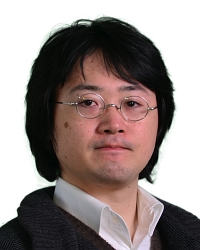TR2020-107
Nonlinearity Tolerant LUT-based Probabilistic Shaping for Extended-Reach Single-Span Links
-
- , "Nonlinearity Tolerant LUT-based Probabilistic Shaping for Extended-Reach Single-Span Links", IEEE Photonics Technology Letters, DOI: 10.1109/LPT.2020.3006737, Vol. 32, No. 16, pp. 967-970, July 2020.BibTeX TR2020-107 PDF
- @article{Skvortcov2020jul,
- author = {Skvortcov, Pavel and Phillips, Ian and Forysiak, Wladek and Koike-Akino, Toshiaki and Kojima, Keisuke and Parsons, Kieran and Millar, David S.},
- title = {{Nonlinearity Tolerant LUT-based Probabilistic Shaping for Extended-Reach Single-Span Links}},
- journal = {IEEE Photonics Technology Letters},
- year = 2020,
- volume = 32,
- number = 16,
- pages = {967--970},
- month = jul,
- doi = {10.1109/LPT.2020.3006737},
- issn = {1941-0174},
- url = {https://www.merl.com/publications/TR2020-107}
- }
- , "Nonlinearity Tolerant LUT-based Probabilistic Shaping for Extended-Reach Single-Span Links", IEEE Photonics Technology Letters, DOI: 10.1109/LPT.2020.3006737, Vol. 32, No. 16, pp. 967-970, July 2020.
-
MERL Contacts:
-
Research Areas:
Communications, Electronic and Photonic Devices, Optimization, Signal Processing
Abstract:
We propose Huffman-coded sphere shaping (HCSS) as a method for probabilistic constellation shaping which provides improved tolerance to fiber nonlinearities in single-span links. An implementation of this algorithm based on look-up-tables (LUTs) allows for low-complexity, multiplier-free shaping. The advantage of short-length shaping for mitigating fiber nonlinear impairments is experimentally demonstrated for a system employing dual–polarization 64–ary quadrature amplitude modulation (DP-64QAM) at 56 GBd and operating over 210 km of standard single-mode fiber (SSMF). A gain in achievable information rate (AIR) of 0.4 bits/4D-symbol compared with uniform signaling is measured, corresponding to a 100% improvement in shaping gain compared with ideal Maxwell–Boltzmann (MB) shaping. The combinatorial mapping and demapping algorithms can be implemented with integer addition and comparison operations only, utilizing an LUT with 100 kbit size.

